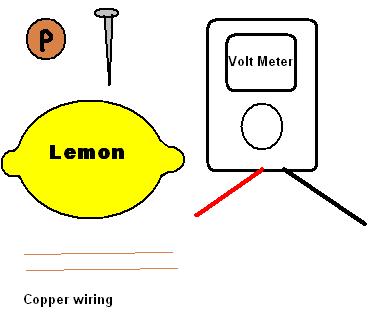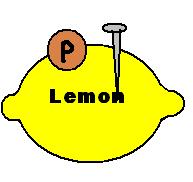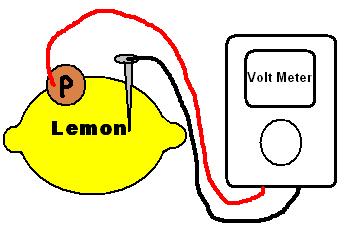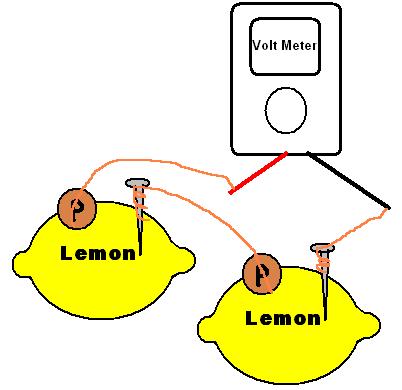Lemon Battery
How to Make a Lemon Battery
Are you competing in a science fair? Want to impress your friends or simply just learn some good ole fashioned science? If you want to learn how generate your own electricity to save money, then this is not the page. However, I can show you how to make small volts of electricity using a lemon. That's right! I am going to show you how to make a homemade lemon battery. Why is this important? Well if you have enough lemons then you can generate enough volts to power small electronics. You’ve heard of the potato clock, right? Well, it’s basically the same principle but with lemons.
What you need:
- Lemons
- Copper Penny-pre 1980
- Iron or zinc nail or a dime
- Voltmeter
- Copper wiring
You can try adding more and more lemons to get higher voltages. If you happen to have a small LED light than you can connect it the to wire terminals on the lemon battery and see if it lights up. This is a simple science experiment that kids all over the world use in science fairs.
Building a lemon battery




Steps and Process
It is fairly simple to build a lemon battery.
Step 1: Take a knife and cut two slits into the lemon.
Step 2: Insert the copper penny into one slit. Then insert the nail or dime into the other slit.
Step 3: Cut three pieces of copper wiring about 6 inches long.
Step 4: The red line on the volt meter is the positive terminal and the black line is the negative terminal. Connect the red positive to the copper penny and the black negative to the nail or dime.
Step 5: Now you should see a number on the volt meter. That is the voltage output of the lemon battery.
Advanced
To connect more lemons together to get a higher voltage is easy.
Step 6: Set up another lemon battery, same as the first. Then grab the cut wires.
Step 7: Take one wire and place it in the lemon next to the penny, make sure the wire is touching the penny. Take the another wire and do the same with the second lemon. Then take the last wire and wrap it around the nail of the second lemon. Make sure it is touching the metal.
Step 8: Now on the second lemon, take the wire that is touching the penny and connect it to the nail of the first lemon.
Step 9: Now connect the wire that touches the nail or dime on the first lemon and attach it to the black terminal on the volt meter. Take the other wire on the second battery and connect it to the red terminal on the volt meter. You should now see a bigger number on the meter than before. This means that the voltage output had increased.
Step 10: To increase your voltage repeat the same process by adding more lemons.If you can reach a high enough voltage then you can power small electronics, like a LED light.
So there you have it! That's all it takes. Fairly simple right? If you don't understand anything or need a visual then watch the video and click the link.
Video Demonstration
Building a Lemon Battery
- Lemon battery experiment
Learn how to create battery from lemon.






